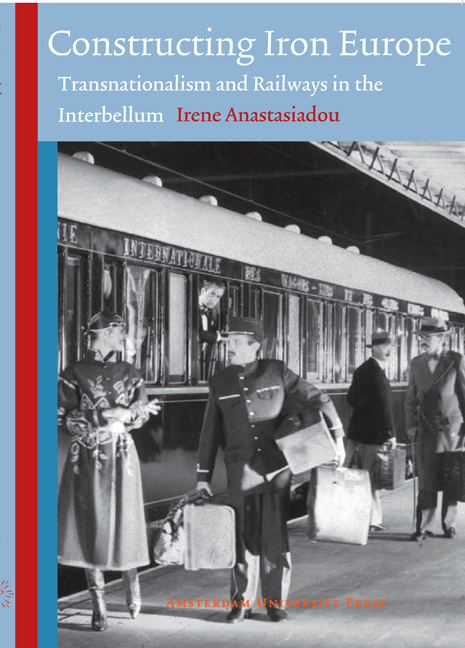Book contents
- Frontmatter
- Acknowledgements
- Contents
- Abbreviations
- 1 Introduction
- 2 Europe in Crisis and Railway Visions
- 3 Shifting Railway Regime
- 4 European Integration, European Fragmentation
- 5 Constructing the National, Constructing the European: Greece
- 6 Uncovering Railway Europe
- Bibliography
- Summary
- Curriculum Vitae
- Appendix I Timeline of Conferences and Conventions held in the Early years After the war, Concerning Railways:
- Appendix II Schedule of International Expresses in the 1930s
- Appendix III List of Illustrations
2 - Europe in Crisis and Railway Visions
- Frontmatter
- Acknowledgements
- Contents
- Abbreviations
- 1 Introduction
- 2 Europe in Crisis and Railway Visions
- 3 Shifting Railway Regime
- 4 European Integration, European Fragmentation
- 5 Constructing the National, Constructing the European: Greece
- 6 Uncovering Railway Europe
- Bibliography
- Summary
- Curriculum Vitae
- Appendix I Timeline of Conferences and Conventions held in the Early years After the war, Concerning Railways:
- Appendix II Schedule of International Expresses in the 1930s
- Appendix III List of Illustrations
Summary
Central European Traffic Routes
Germany and Austria-Hungary played a prominent role in international railway traffic in Europe throughout the 19th century and until the outbreak of the war. Germany possessed a dense railway network in Europe in the years before WWI. This was a result of the rapid development of the German railway network after 1870. At an international level, the German Railway Union (1847) exercised great influence over the railway affairs of central and northern Europe, particularly in promoting co-operation among railway administrations of different nationalities. German railway policy expanded beyond the frontiers of German states as evidenced by the case of the financial contribution from Germany to the construction of the Gotthard tunnel (the construction of the tunnel started in 1872 and lasted until 1882). Both Germany and Italy had contributed two thirds of the necessary capital for the construction of the Gotthard railway. In return, they enjoyed preferential treatment in the matter of goods rates and were entitled to share the profit from the exploitation of the line when those profits were in excess of seven per cent dividend. When the Swiss government decided to nationalize the railways in the first decade of the 20th century, Germany claimed similar preference for its freight traffic on the whole of the Swiss Federal Railways, including all lines to be constructed in the future. It based this claim on the argument that since the Gotthard was part of the Federal Railways, any rights in connection with that line passed de facto to the whole. Italy, which saw itself as entitled to equal treatment with Germany, requested the same concessions.
The Swiss federal railways took over the ownership and operation of the Gotthard railway without waiting to conclude the negotiations with the shareholders and with the German and Italian governments. This gave rise to complications. After the Swiss railway nationalization scheme had been decided on, the acquisition of the Gotthard by the federal government was fixed to take place in 1909, and the line was formally taken over in this year. However, it was found impossible to conclude negotiations with the shareholders of the powers concerned by this date. It was therefore decided that the unfinished business should be circumscribed by special conventions on terms to be discussed with Italy and Germany.
- Type
- Chapter
- Information
- Constructing Iron EuropeTransnationalism and Railways in the Interbellum, pp. 33 - 96Publisher: Amsterdam University PressPrint publication year: 2012



